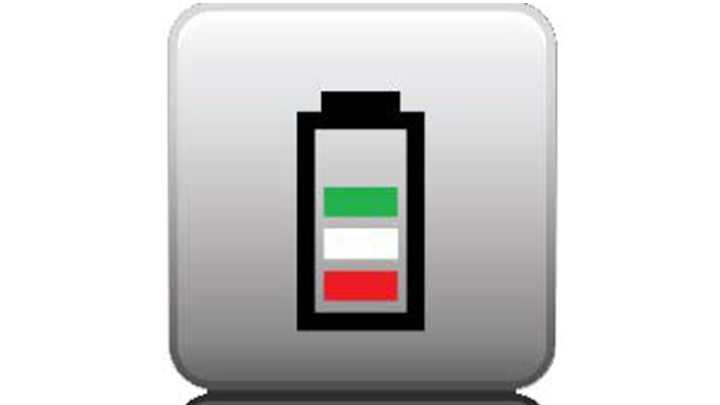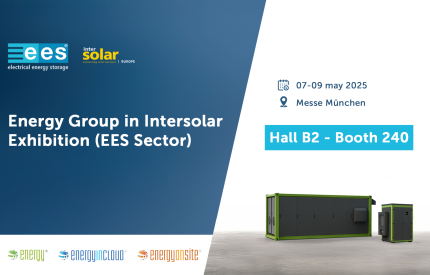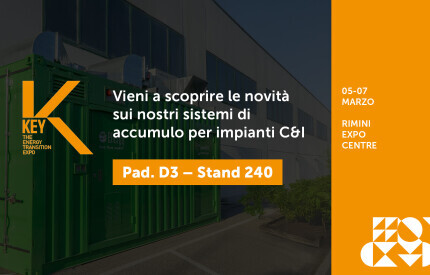Trends of the EES market in Italy

The second largest market by volume in Europe in 2016 was the Italian one, where the Energy Storage is growing rapidly in the residential, commercial and industrial market.
The second largest market by volume in Europe in 2016 was the Italian one, where the Energy Storage is growing rapidly in the residential, commercial and industrial market.
Last year the trend was roughly installations of 5-6000 units by calculating the two types of systems available in the market: the storage system responding to CEI 0-21 legislation to which the GSE refers and which works in parallel the network, and UPS who respond to CEI-EN 62040 standard.
The residential market in 2016 accounted for over 60% of the value of new installations, thanks to the tax deduction of 50% in ten years, but especially to the ESS Grant of the Lombardy region for PV systems up to 20 kWp.
A grant recognized by up to 50% of intervention expenditure, including VAT, up to a maximum of 5,000 EUR for each operation admitted, the remaining 50% of the storage system could be deducted up to 50% similarly to the PV system in case it was not already there.
The opportunity to acquire a storage system in residential market, minimizes the energy demand from the network and therefore increase overall savings.
The use of storage eliminates the problems related to the discontinuity of the systems of generation from renewable sources and guarantees the energy autonomy even in the absence of sun besides supporting the continuity of energy in the event of power failure.
This intelligent energy management also allows you to reduce the purchase of power from the grid and optimize power consumption and system efficiency.
Dwelling at the various storage technologies in a global market that has more than 152 storage systems, the pioneer for the residential PV applications in Italy, was the Sunny Boy Smart Energy by SMA, the first PV inverter product in series features an energy storage system with a usable capacity of the battery to the integrated lithium ions from 2 kWh.
Later come on the market the Samsung SDI with a compact system ALL-in-ONE, that offered with a single device the possibility to convert and store energy produced by the PV system, connected to the Internet made it possible to keep up to date on the status of the operation and performance of the system.
Battery inverters with power equal to 5 kW, a lithium-ion battery with a rated capacity of 3.6 kWh and 6,000 cycles of life the unique technical characteristics.
The two main Italian players in terms of sales were Sonnenbatterie with its modular storage system, from 2 to 16 kWh, ALL-in-ONE Lithium Iron Phosphate for new installations and retrofit of PV systems, 10 year warranty and 10,000 recharge cycles guaranteed, equal to more than 20 years.
From the ECO 4 version they have passed after to the ECO 8 characterized by an aesthetic restyling, and from a reduction in weight of about 30 kg.
Tesla Powerwall was the opponent's worthy of Sonnenbatterie, lithium-ion high-voltage capable of delivering an energy of 6.4 kWh and a discharge depth of 100%.
It was first proposed in combination with the StorEdge and SolarEdge inverter, then with the Sunny Boy Storage 2.5, a battery inverter developed for the high-voltage battery with an output of 2.5 kW of charging and discharging.
This year will be replaced by Powerwall 2, marketed under the brand Tesla Energy, with 14 kWh capacity, a power of 5 kW (7 in the peaks) weighs 122kg and also available in the Powerpack for C&I market.
Another interesting solution of storage system it was offered from inverter Solax XHybrid (3-3.7-5 kW) and lithium-ion battery pack LG Chem RESU 48 V, with a capacity of 3.3-6,5-9.8 kWh; with RESU Plus expansion kit passes the capacity to 13.1-16.3-19.6 kWh.
In terms of high-voltage batteries, lithium-ion LG Chem RESU-H 400 V (7 and 9.8 kWh) with a depth of discharge of 95% are matched to the Sunny Boy Storage 2.5 with integrated web server and direct access to the portals.
About German manufacturers have entered the market also Senec with the ESS lithium-ion Senec Home, power ratings from 2.5 to 10kW, extendable to 12 years warranty on the entire system.
Varta presented Element, a coupled storage system in AC, three-phase, that can be installed on new and existing PV systems with inverters.
Lithium-ion technology, the modular system from 3 to 9 kW and monitoring can be performed either locally or remotely via free portal where all data on consumption, input and battery state of charge are available.
Finally two known brand especially in the world of solar inverters : Abb with REACT, a single-phase inverters from 3.6 kW and 4.6 kW, with modular lithium-ion expandable from 2 to 6 kWh, two inputs MPPT to extract the maximum power available, 4 outputs with integrated load management and auxiliary output for backup power during blackouts.
Fronius instead introduced the Fronius Energy Package : Three-phase inverter Symo Hybrid with capacities from 3.0 to 5.0 kW with DC link, battery lithium iron phosphate batteries from 4.5 to 12 kWh and a useful life of about 8000 cycles.
The challenge in the Italian market this year will be significant, many more actors on a growing market estimated at 8-10,000 single-phase and three-phase storage systems.
Technological drivers will be the battery cycles, connectivity, monitoring, size and weight, in terms of price in six years, the storage systems have seen the price fall by a third, by 2020 will halve allowing the Italian energy market to change forever!
The storage systems are becoming the key element for the development of all the renewable energy sector in Italy.
Alberto Nadai
Business Development Manager Italy / Switzerland - Hanwha Q CELLS Gmbh
Altre news
Energy Group ad Intersolar 2025, Fiera di Monaco | Vieni a trovarci!
Dal 7 al 9 maggio 2025
Energy a KEY 2025, Fiera di Rimini | Vieni a trovarci!
Dal 05 al 07 Marzo 2025
Energy S.p.A.: Innovazione e Intelligenza Artificiale per un migliore servizio all’installatore e all’utente finale
Energy S.p.A. in collaborazione con UniSMART, ha sviluppato un chatbot AI per ottimizzare supporto tecnico e ticketing, migliorando efficienza e valorizzando le competenze del team.








